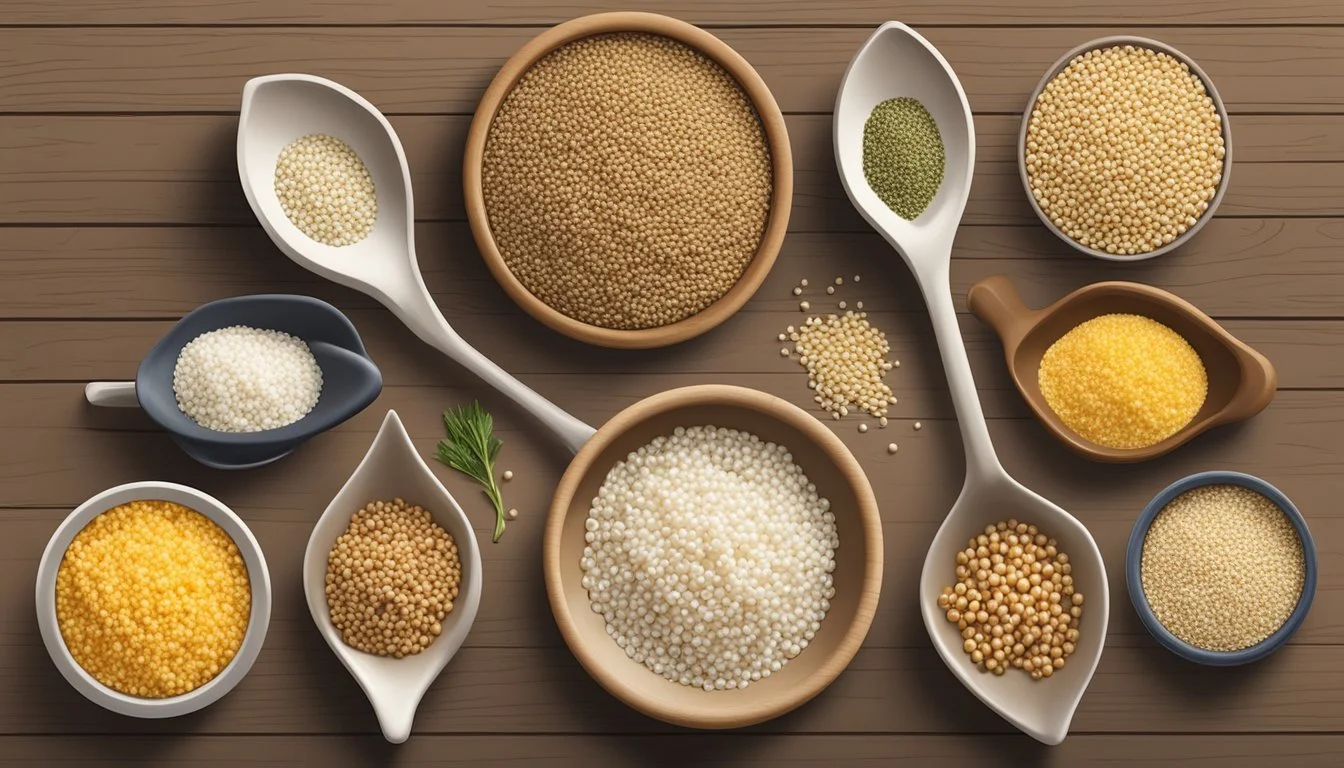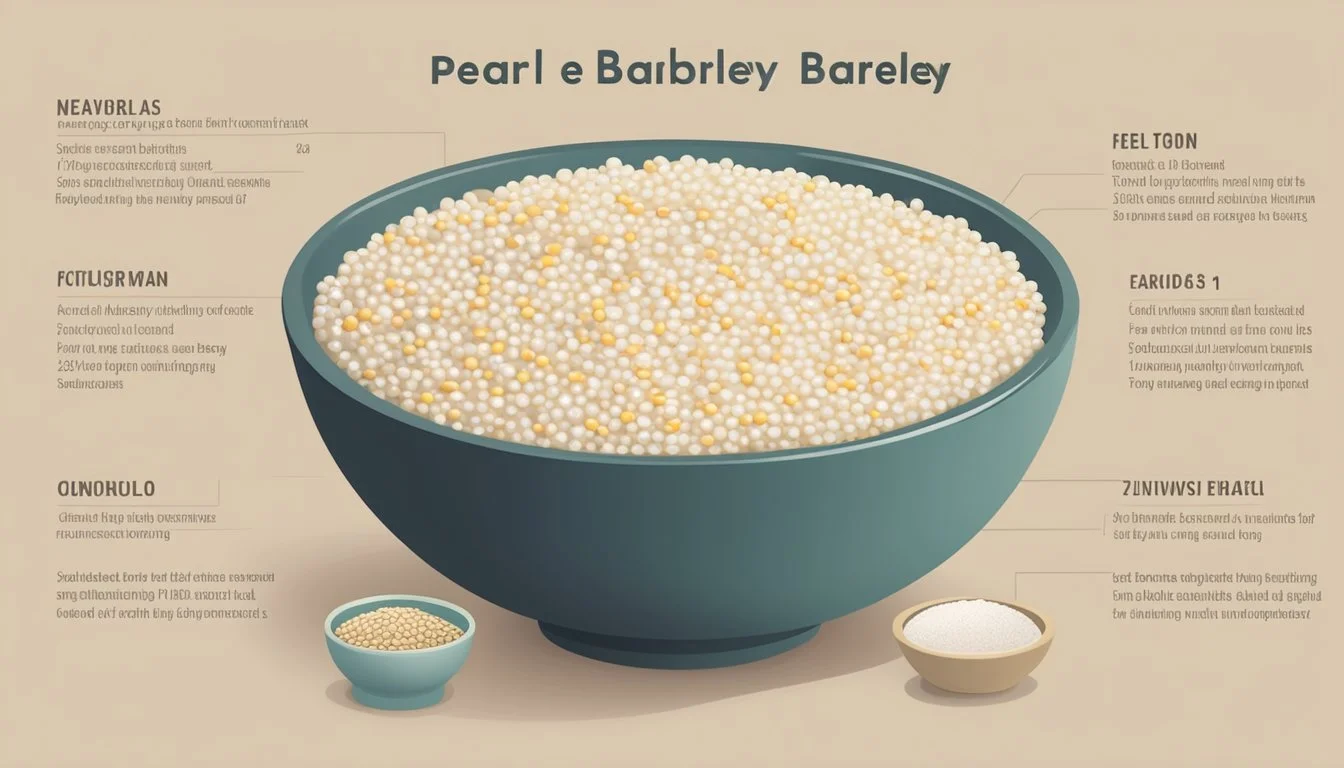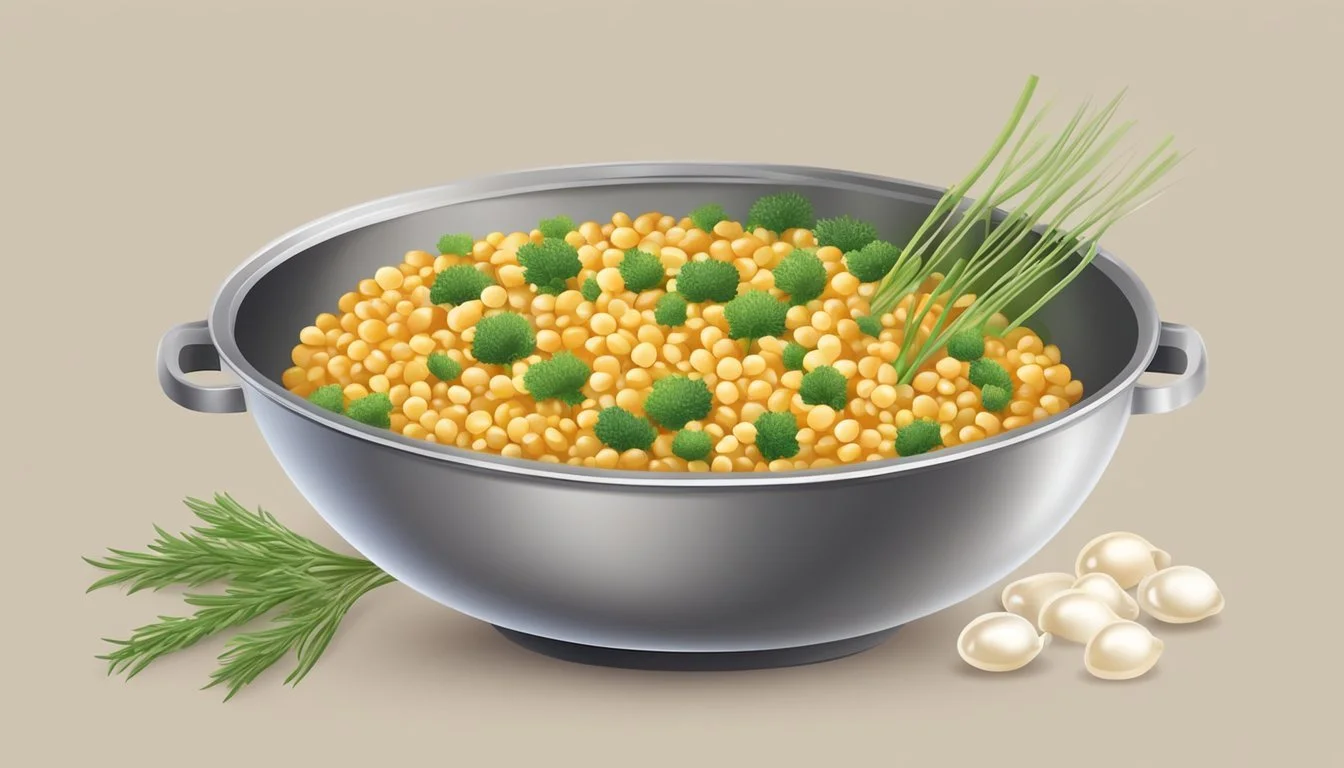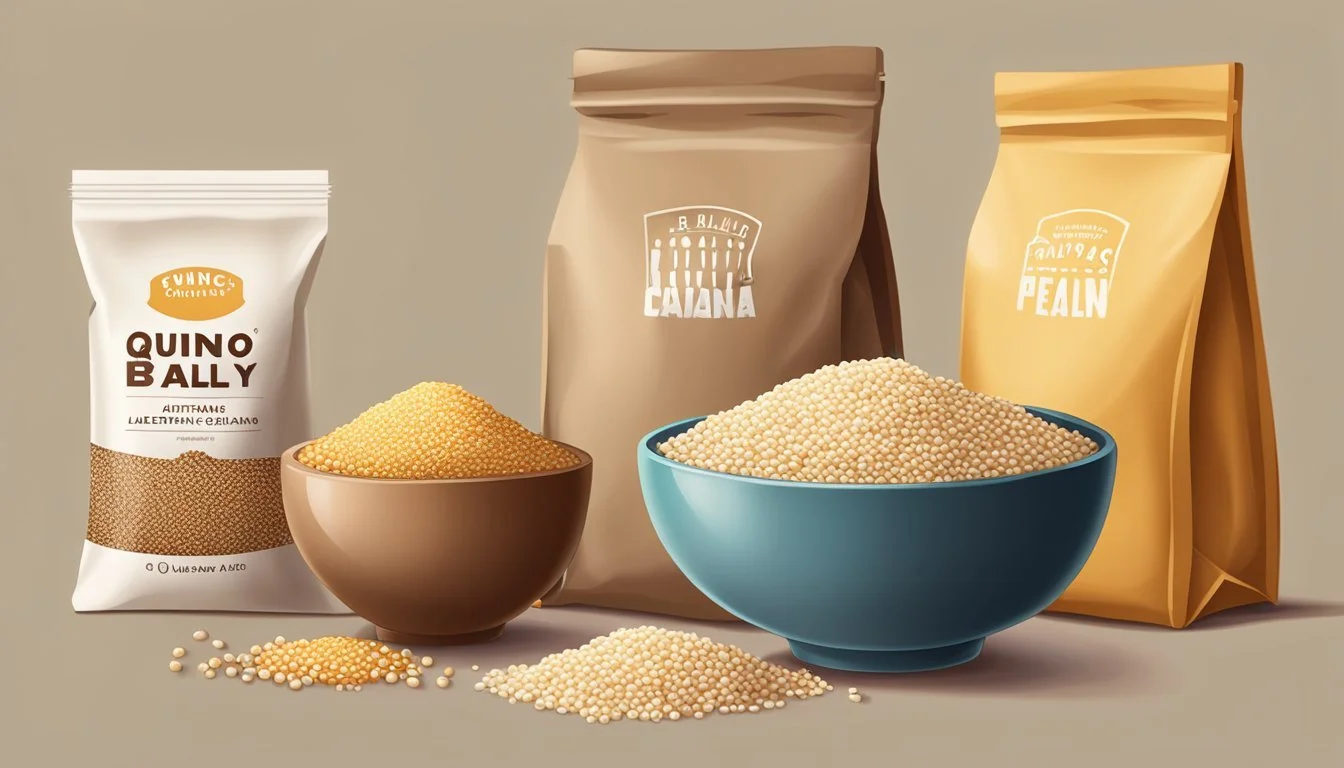Pearl Barley Substitutes
Best Alternatives for Cooking
Finding the perfect substitute for pearl barley can transform your favorite recipes without compromising on taste or texture. Pearl barley is a nutritious grain often used in soups, stews, and salads for its chewy texture and rich flavor. For those seeking a gluten-free option or simply wanting to try something new, there are several fantastic alternatives available.
Quinoa is a versatile choice that offers a similar texture to pearl barley while providing a broader amino acid profile. Brown rice, another excellent alternative, not only mimics the chewy bite of barley but also adds a nutty flavor to dishes. Additionally, grains like buckwheat and teff provide unique tastes and nutritional benefits, making them great options for various recipes.
Whether you're adapting a beloved recipe or experimenting with new ingredients, these substitutes ensure your dishes maintain their hearty and satisfying essence. Exploring different grains can enhance the nutritional value and flavor profiles of your meals, offering exciting culinary adventures.
Understanding Pearl Barley
Pearl barley is a type of whole grain that is widely appreciated for its versatile use in cooking. It undergoes a process where its hull and bran are removed, resulting in a smooth, pearled finish.
Pearl barley is nutritious, providing a rich source of fiber. This high fiber content is beneficial for digestive health.
In addition to fiber, pearl barley contains protein, which supports muscle repair and growth. This makes it a valuable component of a balanced diet.
It is also packed with nutrients, including vitamins and minerals. These nutrients contribute to overall health and well-being.
Pearl barley has a relatively low calorie content compared to many other grains. This makes it a great option for those monitoring their caloric intake.
Its glycemic index is lower than that of many other grains, which means it has a more moderate impact on blood sugar levels. This is beneficial for those managing diabetes or looking to maintain stable energy levels.
Commonly used in soups, stews, and salads, pearl barley's chewy texture and mild flavor make it adaptable in various dishes.
Nutritional Profile (per 100 grams):
Nutrient Amount Calories 352 Protein 9.91 g Fiber 17.3 g Carbohydrates 77.72 g Fat 1.16 g Iron 3.6 mg Magnesium 79 mg Phosphorus 221 mg
Pearl barley's versatility and rich nutritional profile make it a favored choice in many kitchens around the world.
The Nutritional Profile of Pearl Barley
Pearl barley is a nutritious grain offering a substantial variety of vitamins, minerals, fiber, and protein. It is also noteworthy for its calorie content and low glycemic index, making it an appealing choice for those monitoring their dietary intake.
Vitamins and Minerals
Pearl barley is rich in essential vitamins and minerals. Among the notable nutrients are B vitamins such as niacin (B3), thiamin (B1), and riboflavin (B2), which play crucial roles in energy metabolism and maintaining nerve function. This grain also provides significant amounts of iron, which is vital for oxygen transport in the blood, and magnesium, an essential mineral for muscle and nerve function, as well as maintaining heart rhythm.
Other key minerals found in pearl barley include manganese, which supports bone health and metabolism, phosphorus, important for the formation of bones and teeth, and selenium, an antioxidant that helps protect cells from damage.
Fiber and Protein Content
One of pearl barley's standout features is its high fiber content, particularly soluble fiber, which aids in lowering cholesterol levels and improving heart health. In a serving of pearl barley, a substantial portion consists of dietary fiber, essential for promoting healthy digestion and regular bowel movements.
In addition to fiber, pearl barley supplies a moderate amount of protein. While not a complete protein source, it contributes to daily protein intake and supports muscle maintenance and repair. For vegetarians and those seeking plant-based proteins, incorporating pearl barley can be a strategic dietary choice.
Calories and Glycemic Index
Pearl barley is relatively moderate in calories, with around 193 calories per cup of cooked barley. This makes it a viable option for those looking to manage their caloric intake while still obtaining necessary nutrients. Moreover, pearl barley’s low glycemic index (GI) makes it favorable for blood sugar control.
The lower GI means that pearl barley causes a slower, steadier rise in blood glucose levels, which can be particularly beneficial for individuals with diabetes or those trying to maintain stable energy levels throughout the day. This characteristic also helps in preventing sudden spikes in blood sugar, contributing to longer-lasting satiety and aiding in weight management.
Culinary Uses of Pearl Barley
Pearl barley is a versatile grain that can enhance diverse dishes with its unique texture and nutritional benefits. Used in hearty soups and stews, refreshing salads, and even in various baked goods and desserts, it stands as a staple ingredient in many recipes.
Soups and Stews
In soups and stews, pearl barley imparts a chewy texture that enhances the heartiness of the dish. Whether incorporated into vegetable soups, beef stews, or chicken broth, its ability to absorb flavors makes it a favorite in slow-cooked meals.
Cooks often add it early in the cooking process to ensure it becomes tender and integrates well with the other ingredients. The grain's natural ability to thicken the broth further enriches the consistency of soups and stews.
Salads and Side Dishes
Pearl barley brings a nutritious and chewy element to salads and side dishes. One popular recipe is barley tabbouleh, where the grain replaces traditional bulgur wheat. Tossed with fresh tomatoes, cucumbers, parsley, and a lemon dressing, it offers a refreshing take on a classic dish.
For side dishes, it pairs well with roasted vegetables or can be mixed with herbs and spices to create a flavorful barley pilaf. Its adaptability means it can complement a variety of cuisines and dietary preferences.
Baked Goods and Desserts
Pearl barley can be an unexpected but delightful addition to baked goods and desserts. Ground into flour, it can be used in bread, muffins, and cookies, adding a nutty flavor and a boost of fiber.
For desserts, a barley-based pudding can be a delightful, sweet treat, often cooked with milk, sugar, and a hint of cinnamon. The natural sweetness and texture of barley shine in these preparations, offering a wholesome twist to conventional baked goods and sweets.
Common Substitutes for Pearl Barley
Several alternatives to pearl barley offer similar textures and flavors, providing both gluten-free and grain-based options for various dietary preferences and needs.
Grains as Substitutes
Brown Rice
Brown rice is a nutritious whole grain that can replace pearl barley. It has a slightly nutty flavor and chewy texture, making it suitable for soups, stews, and grain salads. Cooking tip: rinse thoroughly and use 2 1/2 cups of water per cup of rice, with a cooking time of 45-50 minutes.
Farro
Farro offers a chewy texture and nutty flavor, similar to pearl barley. This ancient grain absorbs flavors well in soups and salads. For faster cooking, soak overnight. It provides fiber, protein, and several minerals, making it a nutritious alternative.
Bulgur Wheat
Bulgur wheat is a quick-cooking grain with a mild, nutty taste. It works well in dishes like pilafs, salads, and soups. Just soak it in hot water for about 10-15 minutes until tender. It's also high in fiber and protein.
Gluten-Free Alternatives
Quinoa
Quinoa is a versatile, gluten-free grain that's high in protein and contains a complete amino acid profile. Its nutty flavor and chewy texture are ideal in many recipes where pearl barley would be used. Use equal proportions of quinoa as a substitute.
Buckwheat
Despite its name, buckwheat is gluten-free and offers a nutty flavor. It's lower in calories and carbohydrates than pearl barley but still rich in nutrients. Use it in grain bowls, salads, or as a rice substitute in various dishes.
Teff
Teff is a gluten-free whole grain with a mild, nutty flavor, fitting seamlessly into many recipes that call for pearl barley. It's rich in iron and calcium, making it a nutritious choice. Use it in soups, stews, or even bake it into bread.
These substitutes provide diverse options for those looking to replace pearl barley in their diets, catering to both flavor preferences and dietary restrictions.
Considerations for Choosing Barley Substitutes
Choosing the right pearl barley substitute involves evaluating factors such as dietary restrictions, texture, flavor, nutritional value, and regional availability.
Dietary Restrictions and Allergies
Selecting a substitute for pearl barley requires attention to dietary restrictions and allergies. For those avoiding gluten, options like quinoa, buckwheat, and teff are beneficial. These grains are naturally gluten-free and provide nutritious alternatives for individuals with celiac disease or gluten sensitivity.
Texture and nutty flavor are key traits, but safety is the priority, especially for those with specific food allergies or intolerances. Always verify the allergen status of any substitute and check for cross-contamination during processing.
Texture and Flavor Matches
Finding a substitute that closely matches the texture and flavor of pearl barley is crucial. Pearl barley has a distinct chewy texture and nutty flavor. Quinoa is a good match due to its slightly chewy texture and nutty taste, making it versatile for various dishes. Another option is farro, which offers a similar bite and richness.
Brown rice provides a more neutral flavor profile but can mimic the texture in stews and soups. Experimentation with different grains can help achieve the desired consistency and taste in recipes.
Nutritional Equivalence
When replacing pearl barley, consider the nutritional aspects like fiber, protein, and other essential nutrients. Pearl barley is high in both fiber and protein, valuable for a balanced diet. Quinoa stands out as it also offers a high protein content and a complete amino acid profile.
Buckwheat and teff are rich in minerals like magnesium and iron, which are beneficial. It's important to assess the specific nutritional needs and balance them with the appropriate substitute to maintain dietary benefits.
Regional Availability
The availability of certain substitutes can vary by region. Oats, quinoa, and brown rice are widely available in most grocery stores. In contrast, specialty grains like farro and teff may be harder to find and might require a visit to a health food store or online purchase.
Understanding the local market helps in making practical and accessible choices. Regional availability can impact the suitability of substitutes, especially for consistent cooking and meal planning.
Preparation and Cooking Tips for Substitutes
When substituting pearl barley, the key aspects to consider are the grain to liquid ratios, cooking times, and the desired texture of the final dish. Pay attention to these factors to achieve optimal results in your recipes.
Grain to Liquid Ratios
Different grains require specific amounts of liquid for proper cooking. For instance, quinoa needs a 1:2 ratio, meaning for every cup of quinoa, use two cups of water. Brown rice typically requires a 1:2.5 ratio, where one cup of rice is cooked with 2.5 cups of water. Farro benefits from being soaked overnight; then a 1:3 ratio of farro to water is ideal. Teff requires a 1:3 ratio, similar to farro, to ensure even cooking and proper hydration.
Cooking Times
Cooking times affect the texture and doneness of your grains. Quinoa cooks relatively quickly, needing about 15-20 minutes. Brown rice takes longer, typically requiring 45-50 minutes. Farro, after soaking, cooks in about 30-40 minutes. Teff also requires about 20 minutes to cook. Adjust these times according to your preference, whether you need firmer or softer grains.
Texture Considerations
The texture of your barley substitute is crucial in dishes. Quinoa provides a light, fluffy texture perfect for salads and stews. Brown rice offers a chewier texture suitable for hearty soups and casseroles. Farro has a nutty, chewy consistency that pairs well with savory dishes like pilafs or grain bowls. Teff has a fine, soft texture, making it ideal for porridges and puddings. Adjust cooking times slightly to achieve the perfect texture for your specific recipe.





